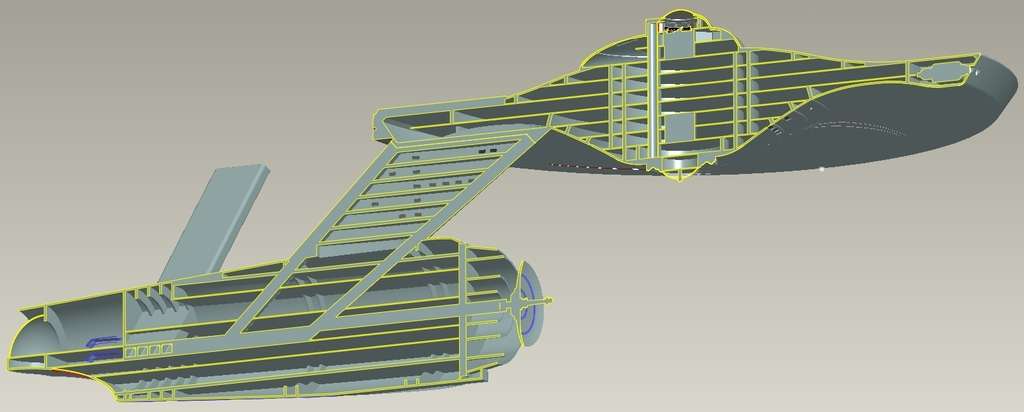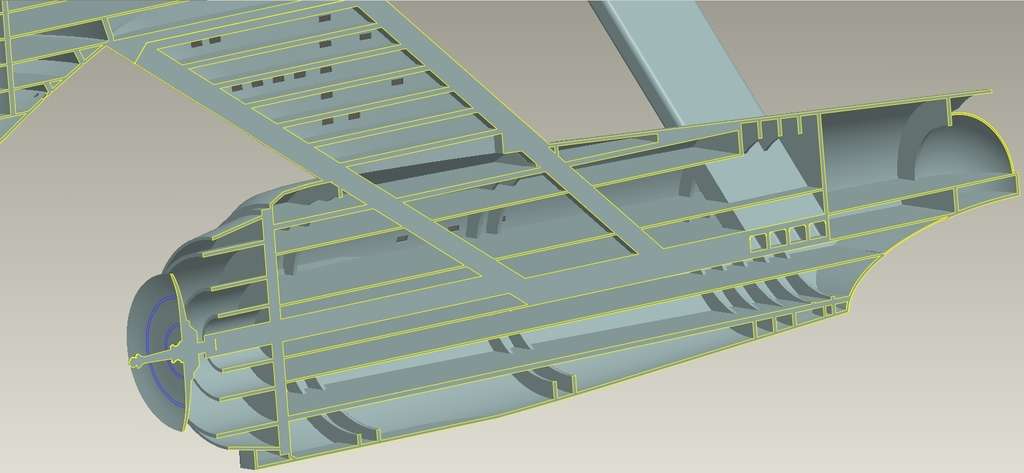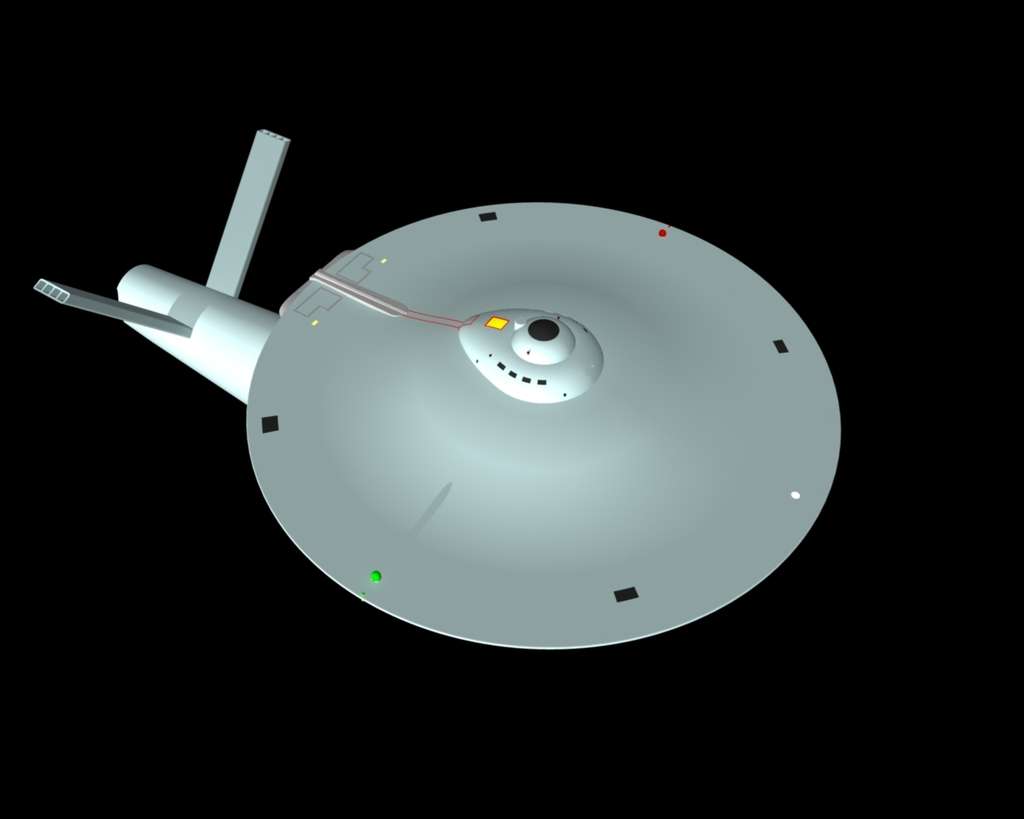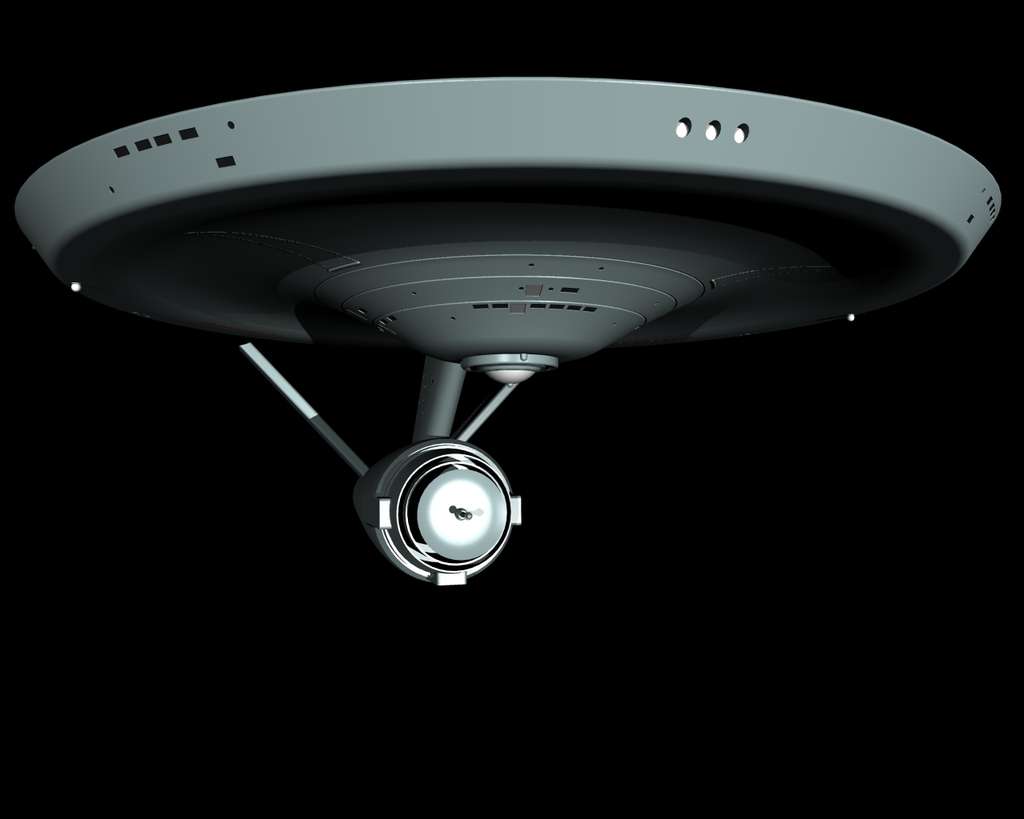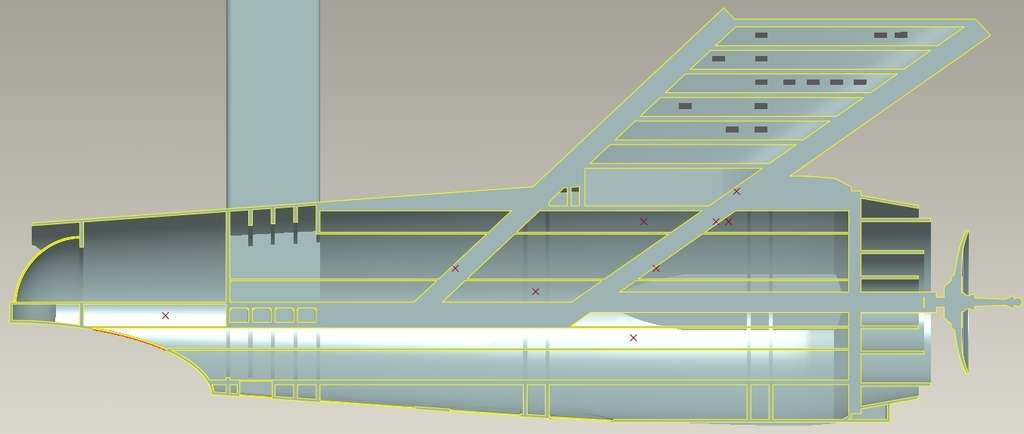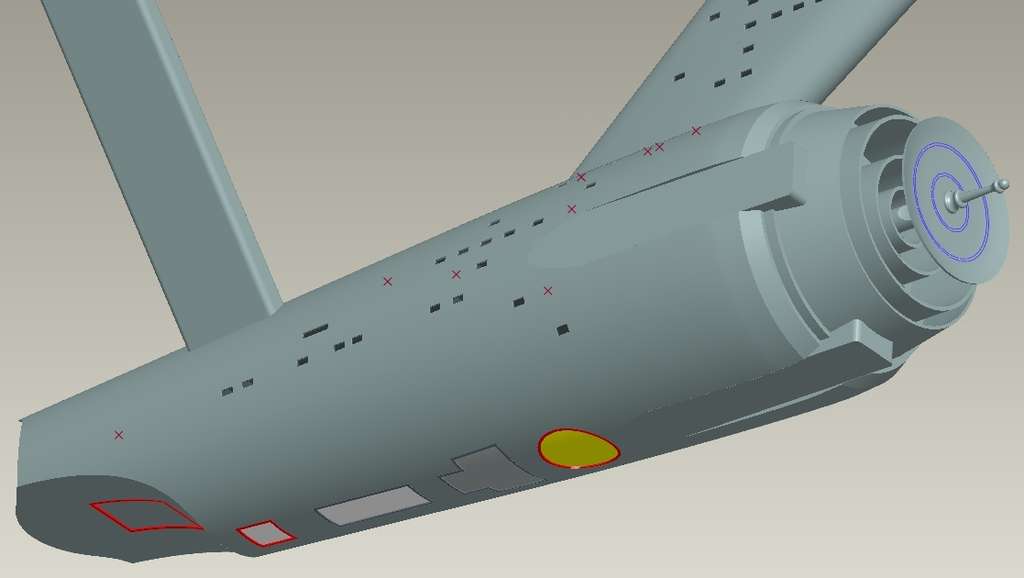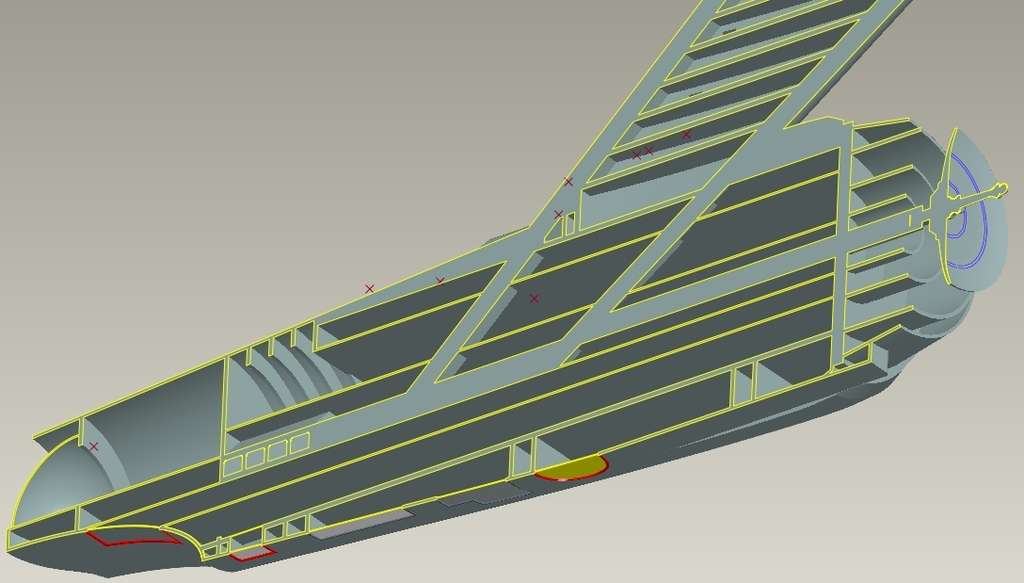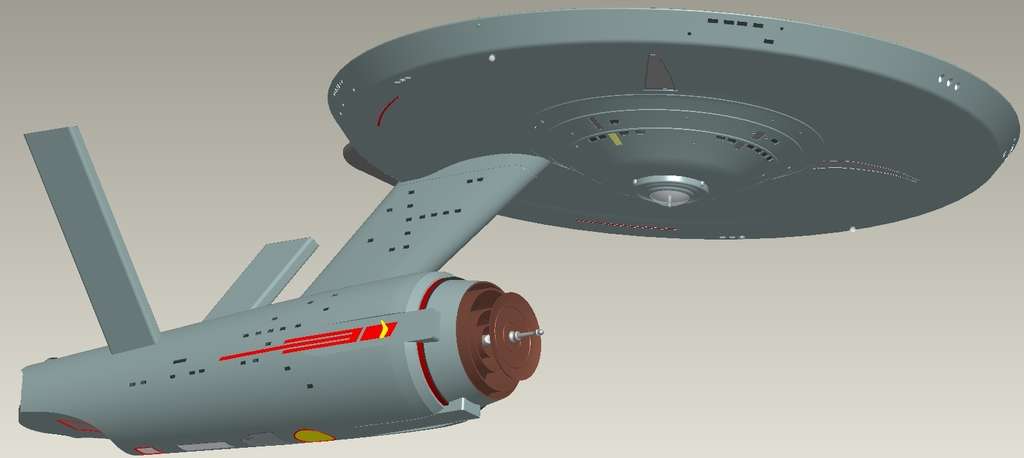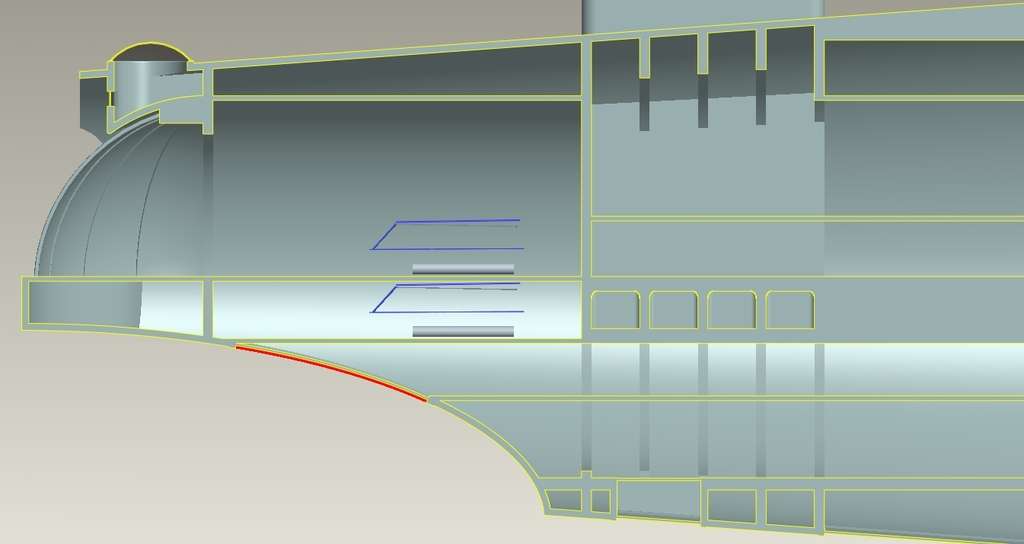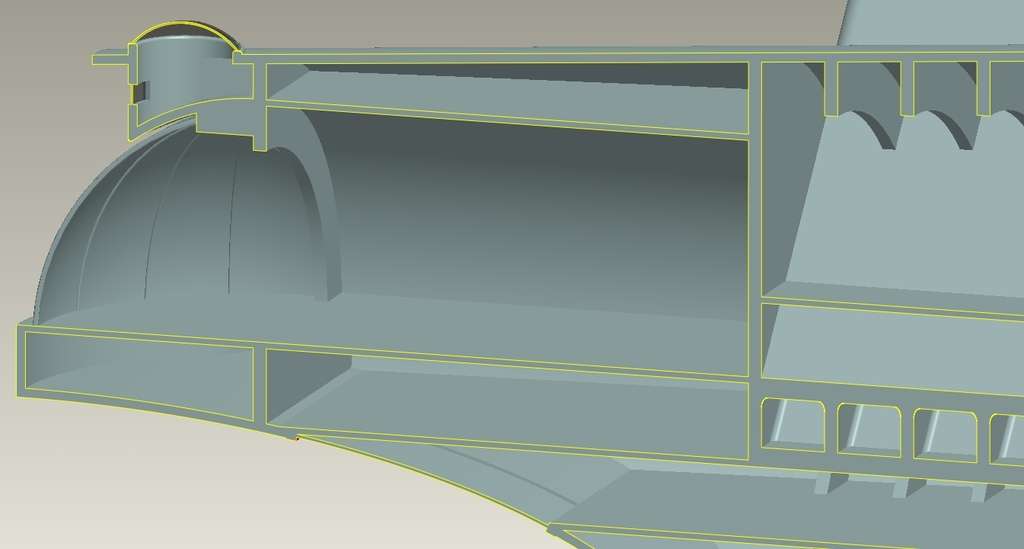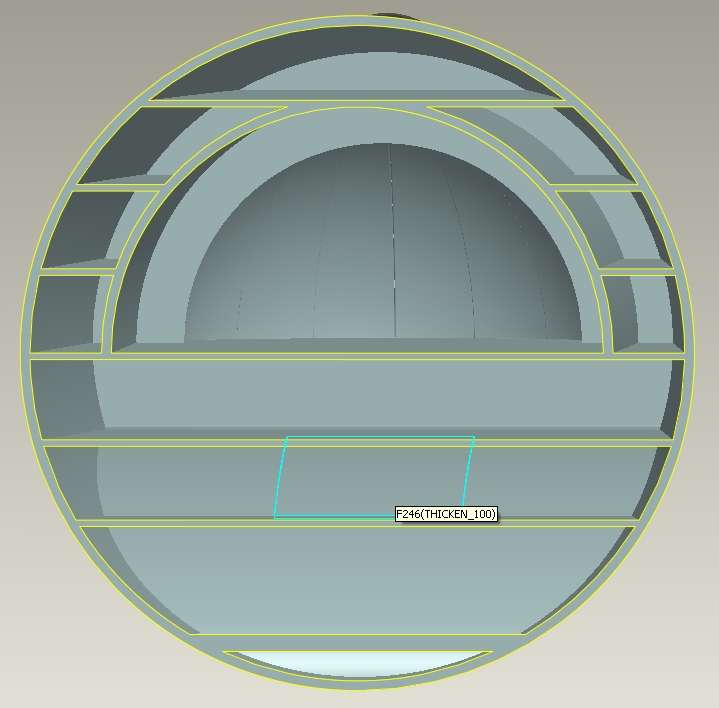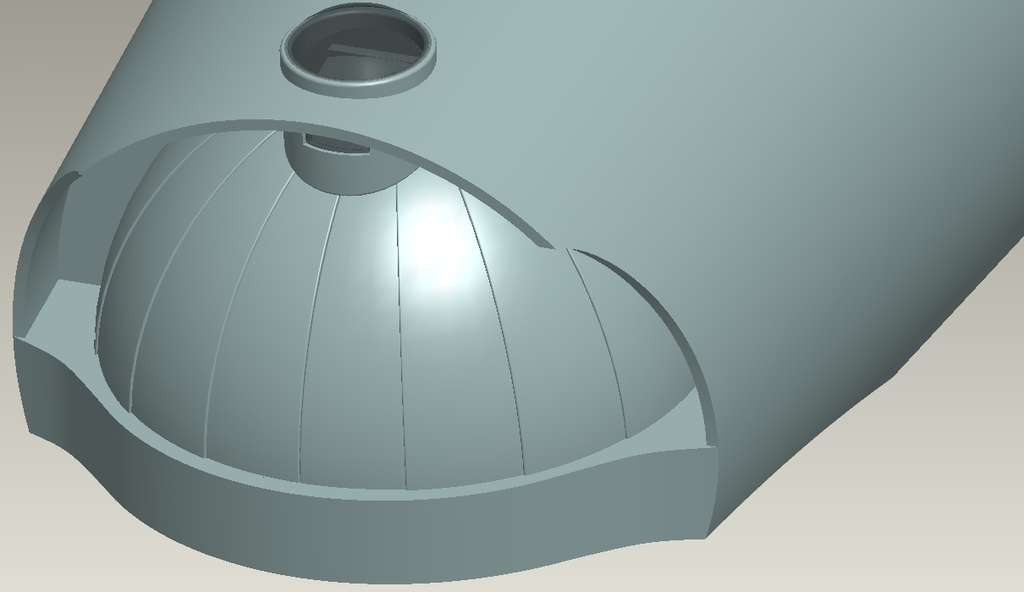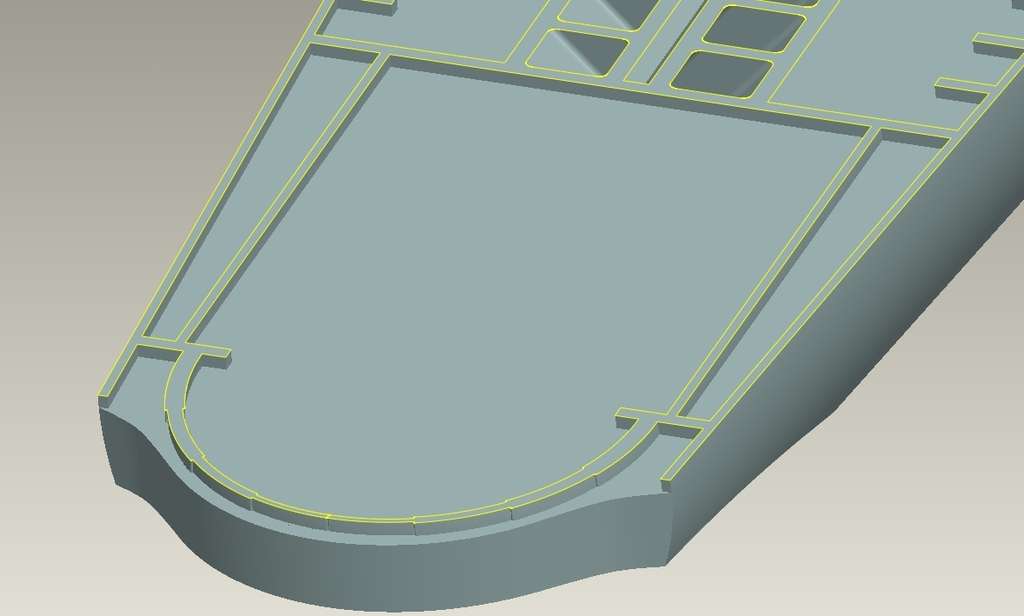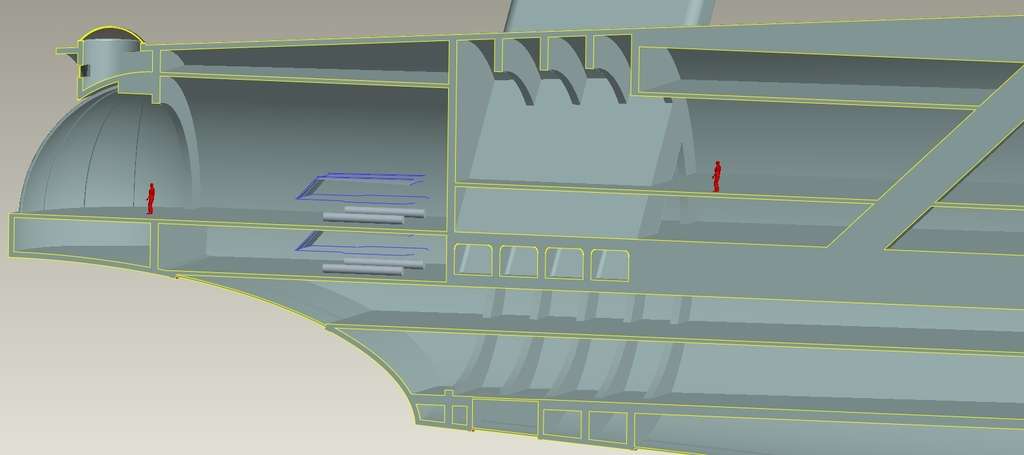Oh, absolutely... the 11' model is as close to "gospel" as you can get (though it's not without error or flaw).Cary, I'm so glad that your version of the deflector dish setup reflects the ring structure behind the dish. Like you, I always hated that FJ didn't acknowledge that. I know that Jefferies's cutaway drawing didn't show it, but as far as I'm concerned, if it's a part of the models it should be included.
As I stated earlier in the thread, I'm basing my model primarily on Sinclair's drawings, though I'm also engaging in significant "comparison study" with several other drawing sets out there, including Casimiro's. And for the most part, I'm using the set drawings which David Shaw helped me get my hands on, though I'm using McMaster's bridge blueprints. Obviously, the "real ship" interiors won't be 100% identical to the sets, but the sets are very much a driving factor in my take.
Regarding the rings... yeah, they were on the 11' model, so they're there. In my "personal canon" take on these, these form a "resonator" which is an integral part of the deflector/scanner functionality... "resonator" in the same sense that a pipe-organ uses the pipes for resonators. They're not "just for show" and they're not "wasted space." They're there, because they serve a purpose. I wouldn't object to "tweaking" their configuration if there were some driving technological reason for doing so, but since we don't really have that sort of technology today, it's hard to say. We're sort of like people from the 1800's trying to understand a jet engine... we can get the very rough basics but the hard science behind it is a bit beyond our knowledge.

Oh, the internal structure of the secondary hull is far from complete. There's a reason I haven't put any decks above the landing bay yet. I need to get the structure... completed. I intend to have a set of "rings" adjacent to each of the angled dorsal elements of the keel. But I need to have the windows placed, first, because I don't want the rings to intersect windows. Then, there will be series of axial beams running from fore to aft along the upper section of the hull (with two of them running the length of the secondary hull... those are visible on the ceiling of the hangar... and the rest terminating at the pylon ring structure. Again, exact locations will have to be based upon known window and deck locations, however.I was thinking another reinforcing ring might be necessary along the line where the secondary hull 'folds' from the 45 degreeish angle to the more or less straight lines of the rest of the structure but she's your baby.
The combination of these beams and rings will form what I'm calling the "strongback" of the secondary hull. Meanwhile, the section going from the intersection of the pylons forward to where it intersects with the beams from the dorsal, and continuing upwards through the dorsal, is what I'm calling the keel. The combination of the "strongback" and the "keel" is what gives the secondary hull it's mechanical strength. The "strongback" will essentially be subdivided into a series of very small compartments... which makes it perfect for fluid or bulk-particulate material storage (containers being strung between the structural members, not actually being made up OF the structural members). Meanwhile, the interior elements of the keel will contain heavy conduits and other critical ship's distribution systems.
In other words... the "Jeffries tubes" are inside of these massive, heavy structural regions... the pylon "beam structures" and the horizontal and upwards-slanting elements of the keel.
The only thing that's still very fuzzy for me is how to have a strong joint between the primary hull and the dorsal, and the minimal "keel" element of the primary hull (in large part, indicated by the rib on top, forward of the impulse engines) and the regular primary hull structure. As I mentioned earlier in the thread, I see this as the single weakest element of the ship, no matter what "magic" materials it's made out of. If I were designing the ship from scratch... I'd have made it like this (modified from the Casimiro drawing, just because that's what I had at hand at the moment I did this):
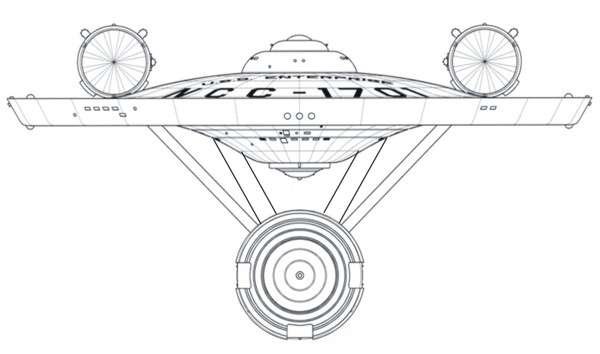
which would be a far more mechanically-robust solution, and actually looks pretty good as far as I'm concerned. But it's not the Enterprise, and my goal is to have something that in every meaningful way "is" the Enterprise we saw on-screen, just given a bit more "polish" and care than MJ was ever able to give her (he had a short timetable, multiple "cooks" in the kitchen, and it was all done for a paycheck for a TV show... not to mention the rather significant limitation of having no access to modern design tools). I'd like to think that what I'm doing would have met with M.J's approval back in 1966, without him seeing it as "changing" his intent in any way.
That said... everyone has their own take on things. I love seeing everyone's versions of the TOS ship. I really wish that, SOMEDAY, we were able to see this design get the big-screen exposure it deserves.





